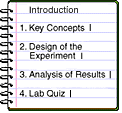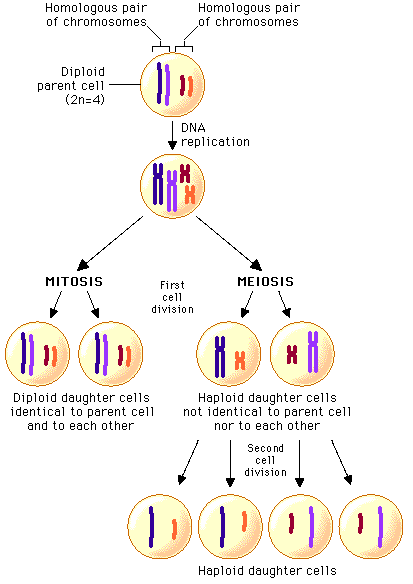
There are two kinds of cell division in eukaryotes. Mitosis is division involved in development of an adult organism from a single fertilized egg, in growth and repair of tissues, in regeneration of body parts, and in asexual reproduction. In mitosis, the parent cell produces two "daughter cells" that are genetically identical. (The term "daughter cell" is conventional, but does not indicate the sex of the offspring cell.) Mitosis can occur in both diploid (2n) and haploid (n) cells; a diploid cell is shown below.
In meiosis, diploid parent cells divide and produce the gametes or spores that give rise to new individuals. The parent cell produces four haploid daughter cells.

Let's look more closely at each process, beginning with the cell cycle.
![]() Continue to The Cell Cycle.
Continue to The Cell Cycle.